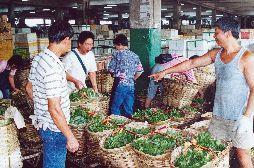
Direct retailer sourcing is a growing trend in China. The dominance of the practice is still a long way off, holding at about 10 per cent at the moment, but the expansion of modern retail and the incursion of foreign retail chains into China is driving direct sourcing forward.
The major difficulties to direct sourcing in China is the largely fragmented system of production, making it hard for a retail chain to procure an entire product line from one source.
Retailers see fit to change this, according to the Beijing Youth Daily, which reports China’s Wu-Mart plants to expand direct sourcing to 70 per cent of its products over the next few years. Carrefour is also reportedly looking to increase direct sourcing.
Cutting out the middlemen can lead to savings of 20-30 per cent, the report says, and the practice is expected to improve the quality of produce on offer to consumers as farmers learn more about retailers’ requirements.
An increase in quality may raise competition with imports, the US Department of Agriculture’s Foreign Agricultural Service said in a report.
“Higher quality products could be a positive outcome from direct sourcing, as farmers are encouraged to produce higher quality products to meet supermarket demand,” the report said.
“While still a long way off in China, ultimately direct sourcing could increase competition with US agricultural imports, many of which end up in China’s supermarkets.”



